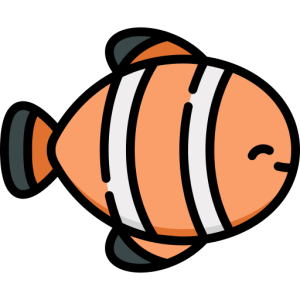How Do Fish Mate? – Fish Mating Process
Fish reproduction is a fascinating and complex process that plays a vital role in maintaining aquatic life. From the mating behavior and courtship rituals to the fertilization process and parental care, fish have developed unique strategies for successful breeding. In this section, we will delve into the intricacies of fish reproduction and explore the fish breeding process in detail.
Key Takeaways:
- Fish reproduction plays a vital role in maintaining aquatic life.
- The fish breeding process involves mating behavior, courtship rituals, fertilization, and parental care.
- Fish have developed unique strategies for successful breeding, including group spawning and sequential hermaphroditism.
- Understanding fish reproduction can provide insights into the wonders of aquatic life and the importance of preserving their habitats.
Fish Quiz
How well do you know fish? Test your knowledge here!

Understanding Fish Spawning

Now that we have explored the reproductive cycle of fish, let’s dive deeper into fish spawning.
Fish spawning is the process where male and female fish release their eggs and sperm into the water, allowing fertilization to occur. This process is often triggered by environmental cues such as temperature, water levels, and light.
The preparation for fish spawning can take several weeks or even months. During this time, the fish undergo physiological changes to prepare for reproduction. For example, male fish may develop brighter colors or grow specialized structures such as tubercles or nuptial pads to attract females. Meanwhile, females may grow larger ovaries to produce more eggs.
Table: Environmental Factors Influencing Fish Spawning
| Environmental Factor | Effect on Fish Spawning |
|---|---|
| Temperature | Influences the timing and frequency of spawning |
| Water Flow | Affects the distribution and survival of eggs and larvae |
| Daylight Hours | Triggers spawning in some species, particularly in seasonal breeders |
There are two main types of fish spawning: external and internal. External fertilization occurs when the male and female fish release their eggs and sperm into the water simultaneously. Internal fertilization, on the other hand, occurs when the male deposits sperm into the female’s body, with fertilization occurring internally.
Once the eggs are fertilized, they hatch into larvae, which eventually develop into juvenile fish. The length of time for this process varies among different fish species and depends on factors such as water temperature and food availability.
In conclusion, fish spawning is a key part of the reproductive cycle of fish, and it plays an important role in maintaining fish populations. Understanding the various factors that influence fish spawning can help us better protect and preserve aquatic habitats for future generations.
Courtship Rituals and Mating Behavior

Fish are fascinating creatures that exhibit complex courtship rituals to attract mates. These rituals involve a range of behaviors aimed at signaling fitness, establishing dominance, and attracting partners.
One of the most common courtship behaviors exhibited by fish is fin displays. Male fish often have elongated fins or brightly colored ones that they use to dance in front of potential mates, demonstrating their strength and attractiveness. For example, male guppies fan their colorful tails, while male bettas flare their fins, both trying to impress females.
Another behavior exhibited by some fish is nest building. Male fish often create intricate structures, such as bubble nests, where they coax females to lay their eggs. This behavior not only shows the males’ ability to provide for their offspring but also forms an attractive display for female fish.
Sound production is yet another courtship behavior utilized by some fish. Fish can produce sounds by grinding their teeth, rubbing their fins, or vibrating their swim bladders. These sounds can indicate a fish’s size, strength, or reproductive status. For instance, male toadfish grunt and hum to attract females to their nests.
The Role of Competition
Competition is an integral part of the mating process in fish. Male fish often engage in fierce battles to establish dominance and gain access to females. For example, male salmon fight over the best spawning sites, while male cichlids in Lake Malawi battle for nesting sites.
Competition can also drive the evolution of unique physical features and behaviors in fish. Some male fish, such as anglerfish, have evolved to bite onto the female and become permanently fused, allowing them to stay close to their mate and maximize reproductive success.
Choosing Mates
Female fish can be quite selective when choosing their mates. They often prefer males who exhibit strong courtship displays, physical fitness, and good genes. For instance, female sticklebacks prefer males with bright red bellies, which indicate good health and genetic quality.
Mate choice can also be influenced by environmental factors. For example, in high-risk habitats, female guppies tend to choose males with more vibrant colors, while in low-risk habitats, females prefer males with less flashy colors but greater longevity.
| Species | Courtship Display | Reproductive Strategy |
|---|---|---|
| Guppies | Males display colorful tails | Polygamous |
| Anglerfish | Males bite onto females and fuse with them | Monogamous |
| Seahorses | Males carry eggs in a pouch | Monogamous |
The chart above showcases the different courtship displays and reproductive strategies in select fish species.
Overall, the courtship rituals and mating behaviors exhibited by fish are incredibly diverse and fascinating. By understanding these behaviors, researchers can gain insights into the evolution of species and the intricate workings of aquatic ecosystems.
Fertilization Process and Parental Care

Once the eggs are laid, the fertilization process begins. Fish have developed different methods of fertilization, including external and internal fertilization, depending on their species. External fertilization occurs when the male releases sperm into the water and fertilizes the eggs laid by the female. This method is commonly used by fish species that inhabit the water column, such as salmon and trout.
Other fish species, such as sharks and rays, use internal fertilization. In this process, the male inserts his sperm into the female’s body to fertilize the eggs. This method is used by fish that live in rugged environments, such as coral reefs, where the eggs would be swept out to sea if laid externally.
After fertilization, parental care is crucial for the survival of the offspring. Some fish species exhibit no parental care, while others provide extensive care for their eggs and offspring. Fish that lay eggs externally often scatter them and provide no care, leaving the eggs to fend for themselves. Conversely, fish species that use internal fertilization often provide extra care for their eggs and offspring.
Research shows that some female fish can store sperm from multiple males and selectively fertilize their eggs to increase genetic diversity and the likelihood of producing healthy offspring.
Strategies for Successful Breeding
Fish have developed various strategies to ensure successful breeding, helping them survive and thrive in different environments.
Group Spawning
Some fish species, like salmon and herring, use group spawning as a strategy for successful breeding. Group spawning occurs when several males release their sperm at the same time, significantly increasing the chances of fertilization. Females deposit their eggs in the same area, and the males compete to fertilize them. Group spawning is a successful strategy for fish living in environments with limited resources, as it increases the likelihood of successful fertilization.
Sequential Hermaphroditism
Sequential hermaphroditism is a unique mating strategy used by some fish species. In sequential hermaphroditism, an individual fish changes its sex during its lifetime. For example, clownfish are born male and eventually become female in response to environmental and social cues. This strategy ensures successful breeding, as it maximizes the genetic diversity of offspring and allows the fish to adapt to changing environmental conditions.
Promiscuity
Some fish species use promiscuity as a breeding strategy, where they mate with multiple partners, both male and female. This strategy increases the chances of successful fertilization and genetic diversity. For example, bluehead wrasses engage in “sneaker male” behavior, in which they mimic female appearance and behavior to successfully mate with females while avoiding detection from dominant males.
These strategies have been developed over millions of years of evolution, and they are crucial to the survival of fish populations in different aquatic environments.
Conclusion

From the intricate courtship rituals to the various spawning methods, fish reproduction is a fascinating and complex process. By understanding the fish breeding process, we gain insights into the wonders of aquatic life and the importance of preserving their habitats for future generations.
Throughout this article, we explored the different stages of the fish mating behavior, the reproductive cycle of fish, and the various strategies fish use for successful breeding. We learned about the role of environmental factors in fish spawning, the fertilization process, and the importance of parental care in some fish species.
As we’ve seen, fish have developed various strategies to ensure successful breeding, such as group spawning, sequential hermaphroditism, and promiscuity. Each strategy has its benefits and drawbacks, and understanding them is crucial in preserving species’ survival and genetic diversity.
Overall, the intricate and fascinating process of fish reproduction showcases the wonders of nature and the importance of preserving our aquatic ecosystems. By continuing to study and learn about the fish breeding process, we can ensure the continued existence of these vital organisms.
More About Fish:
- What Do Fish Eat? Learn Their Diet
- How Long Do Fish Live: Average Lifespan of Fish
- 15 Facts About Fish You Didn’t Know
- Fish Quiz: How Well Do You Know Fish?
Frequently Asked Questions
How do fish mate?
Fish mate through a process called spawning, where the male releases sperm and the female releases eggs. The eggs are then fertilized externally or internally, depending on the species.
What is fish spawning?
Fish spawning refers to the act of releasing eggs and sperm for reproduction. It is an essential part of the fish reproductive cycle and ensures the continuation of the species.
What are some courtship rituals exhibited by fish?
Fish display various courtship behaviors to attract mates, such as fin displays, nest building, and sound production. These rituals play a vital role in mate selection and successful breeding.
How do fish fertilize their eggs?
Fish can fertilize their eggs externally or internally. In external fertilization, the male releases sperm onto the eggs outside the female’s body. In internal fertilization, the male deposits sperm directly into the female’s reproductive tract.
Do fish engage in parental care?
Yes, some fish species exhibit parental care. This can involve guarding the eggs, building nests, or even carrying the eggs in their mouths. Parental care increases the chances of survival for the offspring.
What are some strategies fish employ for successful breeding?
Fish employ various strategies for successful breeding, including group spawning, sequential hermaphroditism (changing sex during their lifetime), and promiscuity. These strategies ensure genetic diversity and species survival.
What is the significance of understanding fish reproduction?
Understanding fish reproduction helps us appreciate the intricate and fascinating processes of aquatic life. It also highlights the importance of preserving their habitats to ensure the continuation of fish species for future generations.







